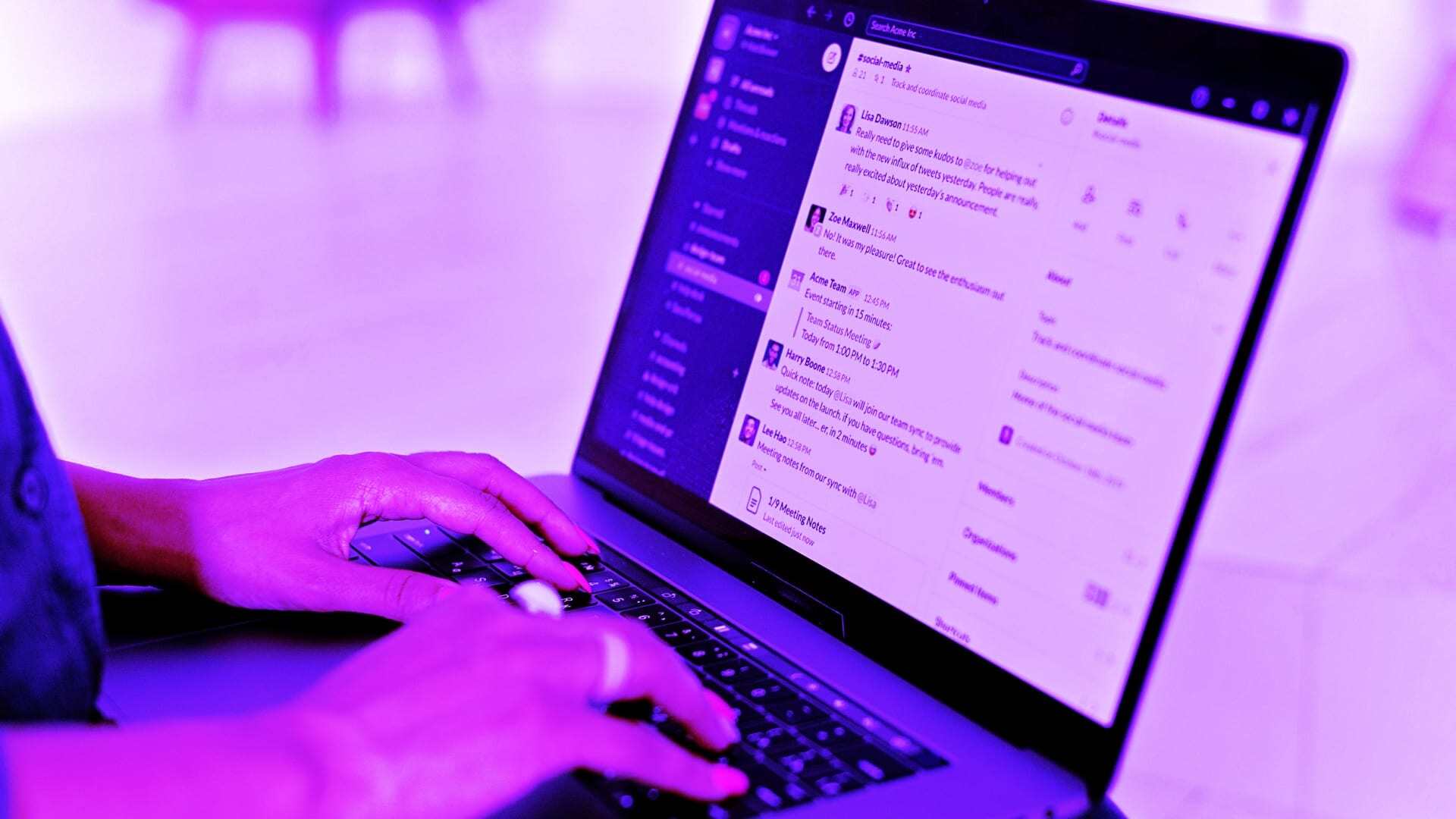- | 8:00 am
Slack didn’t really solve the email problem. Here’s what we can learn from what it did help
By establishing better boundaries we can do what Slack and email can’t: Reclaim the workday and get to the work that matters most.

Threads, file sharing, endless notifications: Slack set out to solve the email problem, but in reality we’ve traded one overstuffed inbox for another.
Emerging in 2013, Slack offered a direct line to coworkers for streamlined communication that didn’t require the same formalities as corporate emails. But trading one stress-inducing method to communicate for another highlights our collective inability to establish boundaries, which ultimately eats away at our efficiency. Maybe the channel isn’t the problem.
Users are spending more than 90 minutes a day actively working in Slack, sifting through channels and direct messages, and responding to a stream of notifications. Ultimately, Slack, Zoom, and Teams all offer instant messaging, which evokes the “always on” feeling. At least with email, there was an expectation of a one- to two-business-day reply. To improve productivity, Slack created an increased sense of urgency.
This isn’t a problem to be ignored. For 30% of home workers, the biggest distractions are incoming messages and overflowing inboxes. What is this distracting us from? The work that matters. It’s leaving us feeling less productive at the end of the workday, pushing off projects with more potential for impact until tomorrow. And let’s be real: It results in the sinking feeling of not quite doing enough to meet targets. That is inherently the crux of work-related stress, is it not?
But it’s not all bad. There’s a lesson in here for what Slack got right. It created a solution that resolved the email problem of outdated formal structures, disorganized threads, and the struggle to have meaningful, real-time discussions.
Let’s take that approach a step further. We can take these lessons to establish better boundaries to do what Slack and email can’t: to reclaim the workday and allow us to get to the work that matters most.
RETHINK AND REMOVE OUTDATED PROCESSES
Both Slack and email require a delicate game of corporate communication. There is a level of appropriateness and timeliness across both, but do we really need to reply to everything? Read everything?
If you haven’t already, create communication guidelines. This way, there’s a clearly defined expectation instead of letting the unhealthy, outdated communication practices cannibalize everyone’s time. Some ideas:
- Set responsive hours. Establish what is a realistic, agreed-upon set of hours when your team can expect a reply. Outside of those hours, don’t reply.
- Set a “deep work” status. Communicate focused deep-work sessions with a status update. This way, team members won’t expect an instant reply.
- Decide what’s worth a meeting versus an async discussion. There is a time and place for both, and establishing what requires a live discussion and what can be decided upon over a messaging platform can help reduce needless noise.
- Clear out unnecessary channels each quarter. Constantly adding channels without a process for deleting unnecessary ones creates clutter. At the end of each quarter, clear out channels that are no longer needed.
PRIORITIZE MEANINGFUL DISCUSSIONS
Through the mess of threads, we’re missing out on some of the most exhilarating and impactful conversations: the ideating, the in-the-moment challenging, the collaborating. Consider how your team arrives at the moments that matter, where you find a new, untapped avenue to solve a problem. How are you creating aha moments for your team?
It’s time to reprioritize conversations that break through to find out-of-the-box solutions, and I’d bet that those conversations don’t fit well within the confines of an inbox. Be sure to have live discussions, not just electronic ones, to solve problems.
DID SLACK SOLVE THE EMAIL PROBLEM?
Slack didn’t solve the email problem, but it taught us something valuable about breaking free of outdated practices. We’ve got many ways to communicate faster, but what feels missing are true, authentic, no-nonsense ways to connect and find solutions that make a difference. It’s harder to find that in an inbox.
As we proceed in a world with more digital solutions that try and help us be as productive as possible, I’ll continue to advocate for something old-fashioned like gathering around a whiteboard. It might feel as archaic as our ancestors gathering around the fire, but maybe it’ll lead to something just as illuminating.







































